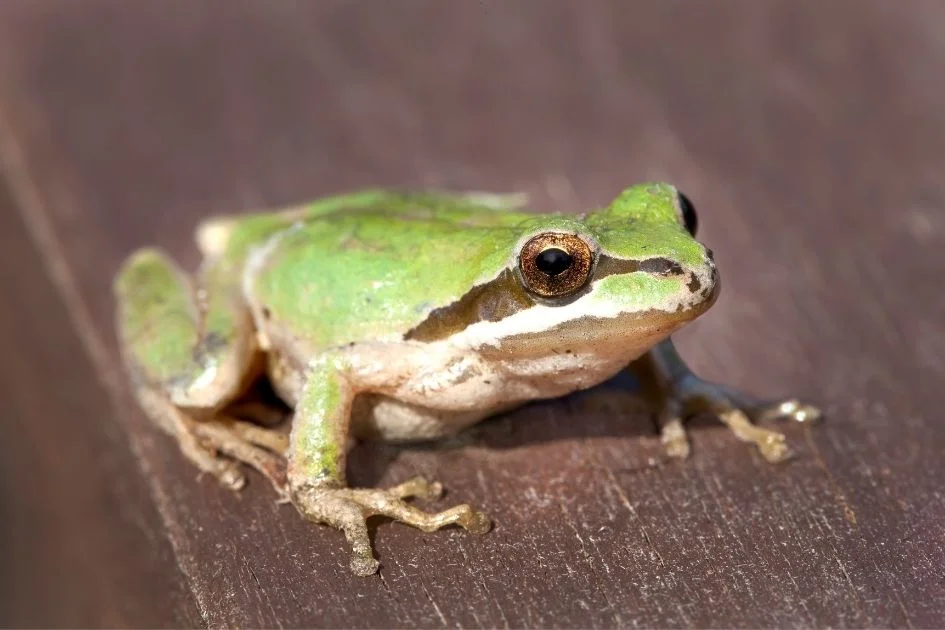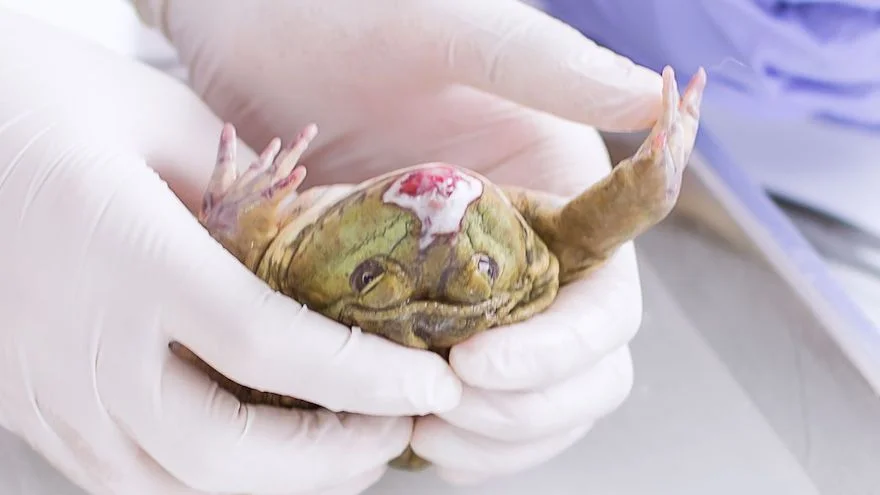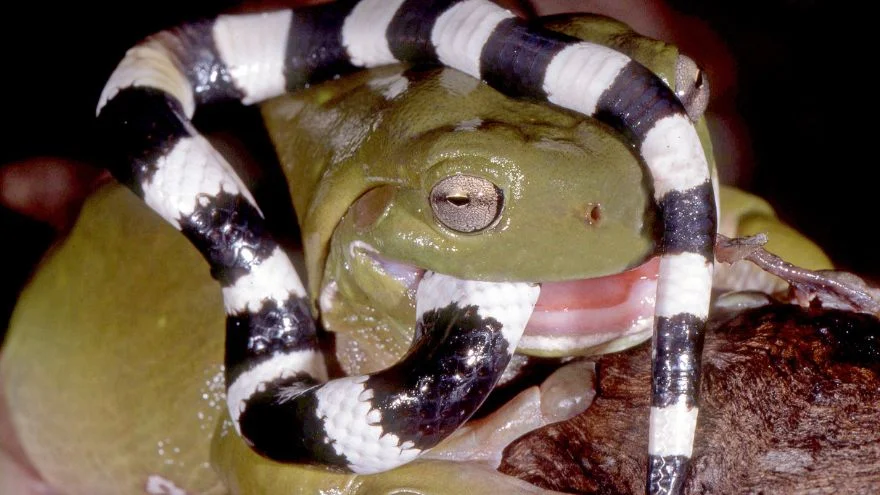Frogs are the most intriguing creatures on earth. They are simultaneously weird and wonderful, with various species and personalities to spare.
Consider their unique mating calls, their ability to survive through freezing winters buried underground, and their diet of insects.
These super-intelligent amphibians also have feelings, which makes us wonder how much they feel. Do frogs feel pain?
Yes, frogs feel pain, and there are pieces of evidence to back this. However, many still believe that frogs cannot feel pain because they do not have the same nerve receptors as mammals.
Let’s take a look at look in-depth says about frogs feeling pain.
What Is Pain?
Pain is an unpleasant emotional experience associated with actual or potential tissue damage. It signals potential harm, and this is the body’s way of saying, “Hey, this isn’t right!”.
It is a complex phenomenon still being studied, and we don’t fully understand it yet.
Do Frogs Feel Pain?

Yes, frogs can feel pain too. Many scientists have come up with physiological and anecdotal evidence(s) that proves that frogs feel pain (physical and emotional distress).
Amphibians have sense organs that detect pain and pathways that help in the processing and consciousness of noxious stimuli.
However, the degree of organization is less structured than in mammals.
Many scientists believe that the pain frogs experience is limited to the ‘higher’ species of the animal kingdom.
Evidence That Frogs Truly Feels Pain
Amphibians meet up with the numerous physiological and behavioral standards proposed as suggesting that non-human animals may experience pain.
These fulfilled standards include:
- Suitable nervous system and sensory receptors.
- Opioid receptors and reduced responses to noxious stimuli when given analgesics and local anesthetics.
- Physiological changes to noxious stimuli.
- Displaying protective motor responses.
- Exhibiting avoidance learning.
- Striking a balance between highly harmful stimulus avoidance and other encouraging requirements.
According to a study conducted by Varner in 2012, frogs experience pain because they have a brain connected to nociceptors, sending pain warnings to the spines and brains.
They also have endogenous opioids that can build chemicals to numb pain or act as anesthetics.
Why Do We Care if Frogs Feel Pain?

When it comes to animal cruelty, many people think of factory farms and disregard other instances of animal cruelty.
However, these amphibians are species that we often overlook when considering their pain experience.
We often use frogs in science experiments, and many people keep them as pets.
Whether frogs can feel pain or not is a valid question since these animals are used often in our society.
If we consider the complex nature of pain, it’s difficult to say if animals experience it.
Recognition of Pains in Frogs
If you notice these signs in your frog, it probably means it’s in pain. Some of these signs include:
- Loss of appetite
- Pale color
- Unusual swallowing of air
- Withdrawal for a long time.
Behavior and Responses That May Indicate Pain

Regarding any animal, it’s essential to remember that not every unpleasant reaction indicates pain.
An animal’s response might be a result of something else entirely. A few behavioral and physiological responses can indicate distress. They include:
Increased heart rate
When an animal’s heart rate increases, it’s experiencing stress, and several factors are responsible, such as fear, pain, or extreme temperatures.
Decreased blood flow to the muscles
When an animal feels threatened, it will clamp down the flow of blood to the muscles and make sure that the vital organs stay protected–this is because the body needs the blood to flow to wherever protected.
Skin flushing
When an animal is experiencing pain, blood flow to the skin can increase and can cause the skin to redden and flush.
Increased stress hormones
Painful situations can cause stress within an animal, releasing stress hormones like cortisol.
FAQs
Can frogs scream in pain?
If you’ve ever heard a frog scream, you’ll agree it sounds amusing. But do you know that screaming is one of the many self-defense mechanisms for frogs?
Yes, frogs can scream in pain to startle and distract their predators. They also yell to warn other frogs of impending danger.
Do frogs feel pain during dissection?
Dissection is also known as customization; it means to dismember or cut the body of a dead animal or plant to pieces.
Before dissecting a frog, it gets pithed with a substance that destroys its brain and spinal cord, making it numb to pain. So, no, a frog doesn’t feel pain during dissection.
Do frogs have feelings?
Frogs have feelings but are limited to safety, fear, and pain. Unlike humans with a more advanced brain structure that makes them have complex emotions, frogs’ feelings are limited.
Conclusion
Given the complex nature of pain and its response in animals, it’s difficult to say if a species experiences it. While we can’t be sure if frogs feel pain, there’s anecdotal evidence that they do.
There are plenty of examples of frogs demonstrating behavior indicating pain or distress, such as increased heart rate or decreased blood flow to the muscles.
Given that frogs are widespread in science experiments, it’s essential to ensure that these experiments cause as minimal pain as possible.
Even if we aren’t sure if animals experience pain, we should treat them as if they do.
There are many different frog species, and it’s important to consider whether or not each species feels pain when performing experiments.
While it’s easy to assume that every species feels pain, assessing each individual is essential.
You May Also Like:
References
- Pain perception and anesthesia in research frogs, https://pubmed.ncbi.nlm.nih.gov/23615302/
- Posner, Lysa Pam, Chinnadurai, Sathya K., pp. 417-423, Recognition and Treatment of Pain in Reptiles, Amphibians, and Fish, 9780813812243, https://doi.org/10.1002/9781118999196.ch38, 2013
- Varner, G.E. (2012). “Chapter 5 – Which animals are sentient? – the table in the article is based on Table 5.2, page 113”. Personhood, Ethics, and Animal Cognition: Situating Animals in Hare’s Two Level Utilitarianism. Oxford University Press.
Featured Image Credit: Pornpimon Rodchua / Getty Images




![How Long Can Frogs Go Without Food Or Water [Answered]](https://animalvivid.com/wp-content/uploads/2022/08/How-Long-Can-Frogs-Go-Without-Food-Or-Water-Answered.jpg.webp)

